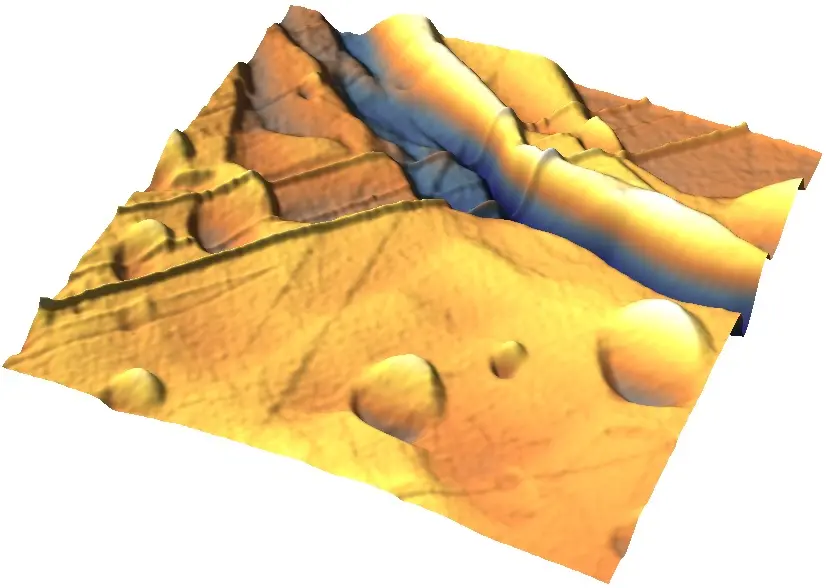Anions intercalation in graphite by means of electrochemical AFM/STM
Anions intercalation in graphite by means of electrochemical AFM/STM
The proposed thesis aims to study the effect of some acid solutions (typically hydrochloric, perchloric, sulfuric, phosphoric and nitric acid) on the surface of a highly oriented pirolitic graphite crystal (HOPG). Generally, graphite is used as an electrode in commercial batteries and it could be degradated due to the presence of acidic substances. Graphite crystals are also used for the production of graphene sheets. Even in this case, graphite is plunged in acidic solutions in order to facilitate the delamination process of the layered crystal.
Despite these important applications, the physical and chemical processes occurring at the microscopic scale on the crystal surface are not fully understood, yet. An in-depth study of this topic requires the use of an electrochemical cell in which the potential applied on the sample can be tuned in view of driving different chemical reactions. On the other hand, the study of the graphite surface at the atomic/molecular scale requires the use of a high resolution microscope like AFM (Atomic Force Microscopy) and/or STM (scanning tunneling microscopy). These experimental systems generally work on samples kept in air or in a vacuum environment. An advanced system allows to plunge the head of the microscope directly inside the solution [electrochemical AFM / STM (EC-AFM / STM)]. In the figure below, an image of the HOPG swelling and erosion, due to the perchloric acid, is acquired with the EC-AFM.
We require that the undergraduate student has a basic knowledge of chemistry. This is a prerequisite in view of handling simple chemical preparations used during the experiments. After a quick training on the use of the EC-AFM / STM, the undergraduate student will be involved in the acquisition of EC-AFM/STM images, data analysis and correlation with other specific chemical analysis [i.e. cyclic voltammetry (CV)].
The thesis is a full-time (from Monday to Friday) work that takes at least six months.
References.
R. Yivlialin et al., "Probing the correlation between morphology and optical anisotropy in ZnTPP films grown at different temperatures", Appl. Surf. Sci. 611 (2023) 155729.
R. Yivlialin et al., "Evidence of graphite blister evolution during the anion de-intercalation process in the cathodic regime", Appl. Surf. Sci. 504 (2020) 144440.
